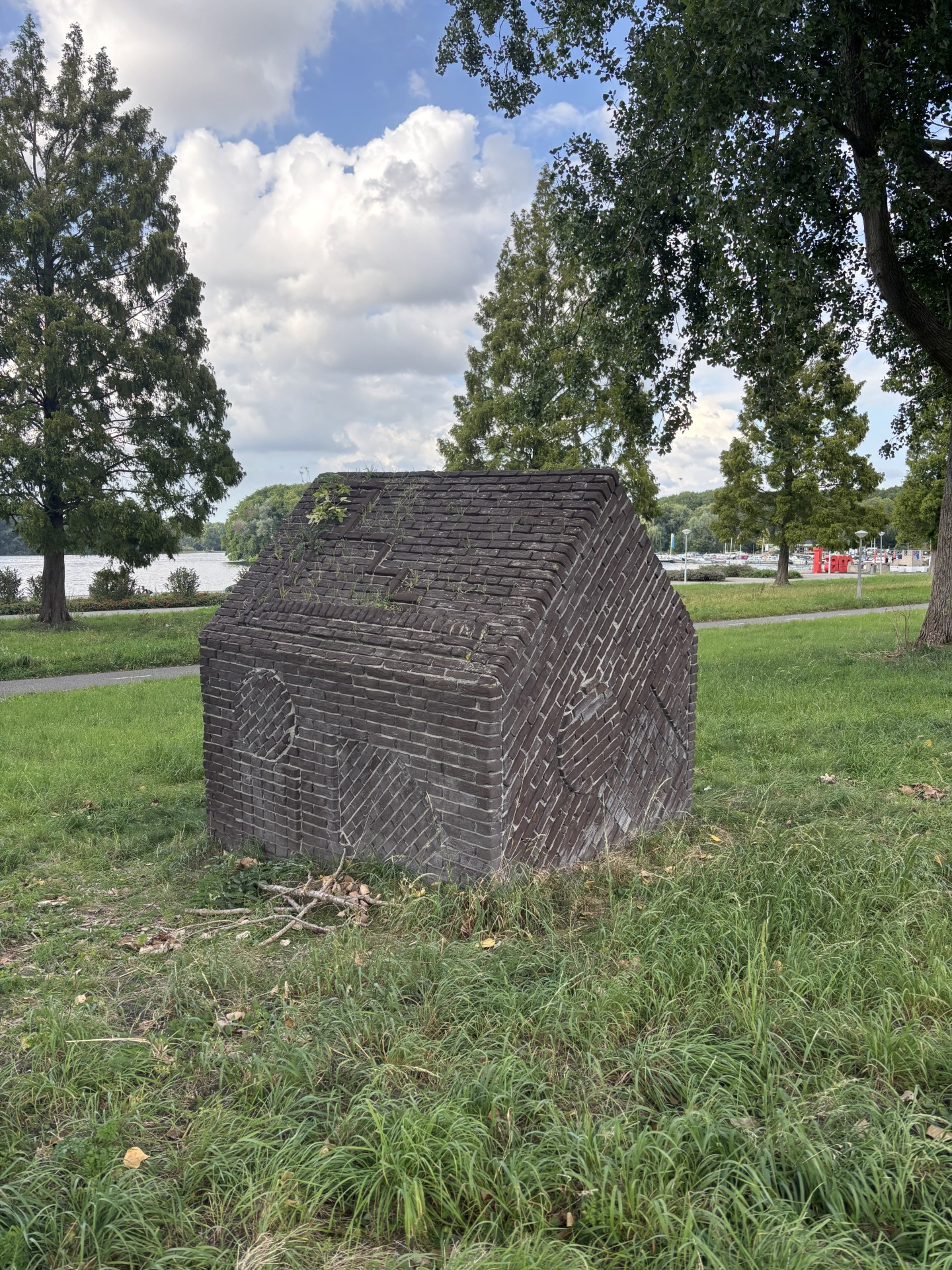“Right, let’s get to work.” With these words, the nameless bricklayer in Isaac Rosa’s The Invisible Hand starts his day. Before him lies a workbench full of shiny tools, arranged as if it were a display case. Eight hours a day, he builds a wall only to tear it down again. Spotlights follow his movements, an audience watches, sometimes applauding, shouting something, taking photos. Why exactly eight hours? Why work at all? Is this satire, a welfare scheme, a performance installation? No one knows.
A few hours after my first day as Secretary of Stadscuratorium, I walk past Sloterplas. I sit down by a small brick house that looks a bit lost. The white-grey cement bulges out in circles and zigzag lines between the tight joints. I think of Rosa’s bricklayer. This structure also raises questions in my mind about its usefulness and purpose. I look it up: Throwaway House [Wegwerphuisje], Herman Makkink, 1989.
Makkink’s fascination with brickwork stems from his interest in the remains of ancient cultures. His visual language often refers to ruins: forms that stand out strangely against their surroundings.
I run my hand along the rough cement. It stimulates me, literally bringing me back to the present with both feet. The nice thing about art in public spaces is that you can get close it, lean on it, whisper or even shout – as if the object allows you to: come on, it says, I’m here for you.
The stones seem stubborn, unaffected by their surroundings. While bicycle bells ring, cars roar and people laugh around a barbecue, I read on: before the buildings were constructed, there were nailed-over wooden houses in Slotervaart. This Throwaway House refers to those constructions.
With that in mind, I look up at the buildings across the street. Makkink’s house takes you out of the ordinariness of the moment, opening the place to a different context. It’s as if you suddenly find yourself wearing heavy shoes that connect you thoroughly to the earth.
My thoughts return to my new position as Secretary. The impressions of my first day fall silent for a moment. In front of me stands this little house, reminding me that work is only part of existence, just as this place carries more stories than the contemporary buildings reveal. I call it for myself: the vertical axis of existence.
That is why I am happy with my work: asking questions about the objects we collect, making connections with current themes, creating space for wonder. Art in public spaces can disrupt and relativise our world view. It can make us feel that other buildings once stood here, and at the same time raise the question: why do I do the work I do?
I feel lighter as I continue my walk. Right, back to work tomorrow.



